![]()
|
|
|
Stoke-on-Trent - Potworks of the week |
Bridgwood & Son, Anchor Pottery, Wharf Street, Longton
|
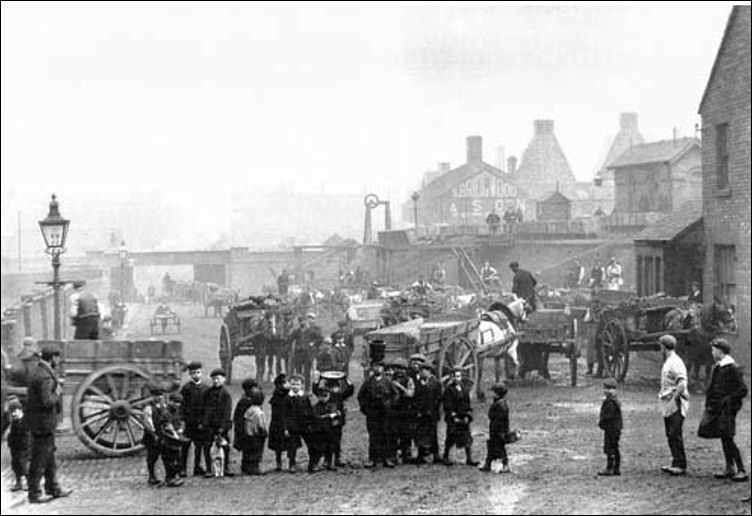
Wharf
Street, Longton, c.1905
on the right is the works of Sampson Bridgwood & Son
Photo: William Blake
© Staffordshire Past Track
Children
wait patiently to pick up small lumps of coal dropped by the coal
merchants.
Once bought by a merchant then dropped in transit the coal became fair
game.
Children would hurry the coal home for use on the fire.
Domestically, coal was used for heat, to cook and to heat water.
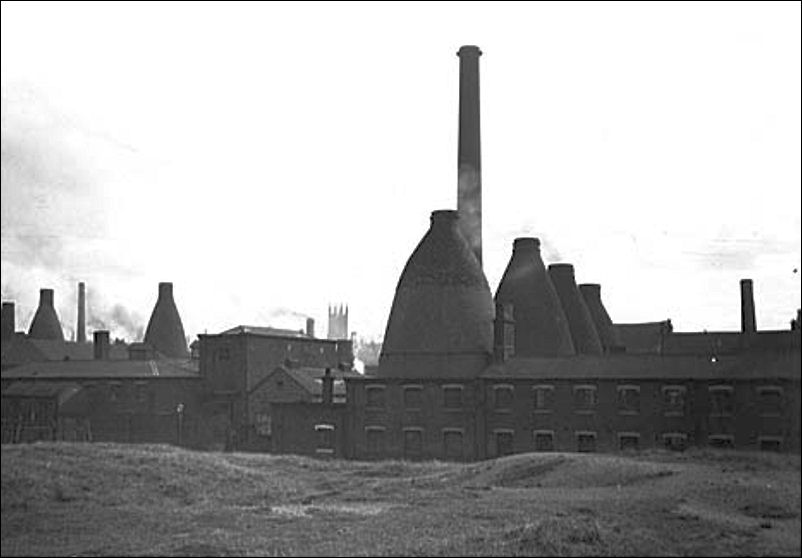
Sampson Bridgwood & Son
at the Anchor Pottery in Goddard Street, Longton
Photo:
c.1960 - Lovatt Collection
© Staffordshire Past Track

the Anchor Pottery at the
corner of Wharf and Goddard Street
(map is combination of 1898 and 1922
maps)
Wharf street was renamed to Bridgwood Street in the mid 1950's
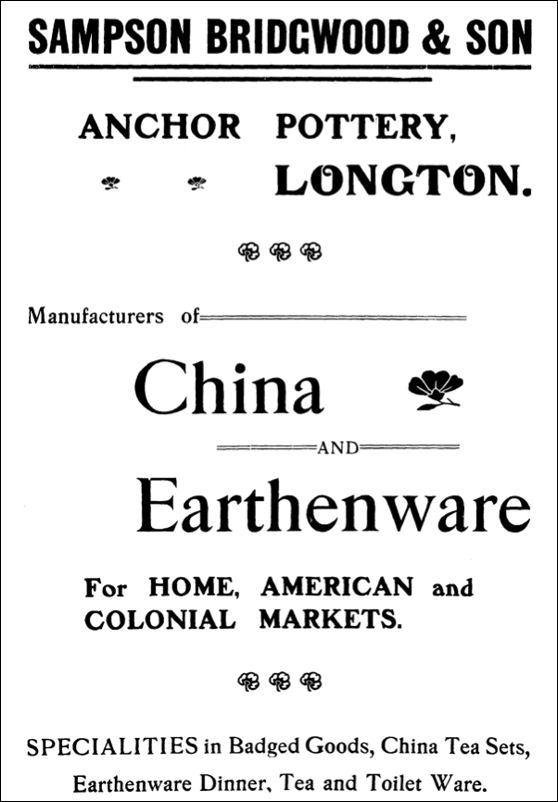
Sampson Bridgwood & Son,
Anchor Pottery, Longton
Manufacturers of China and Earthenware
for Home, American and Colonial Markets
Specialities in badged Goods, China Tea Sets,
Earthenware Dinner, Tea and Toilet Ware
from: 1907 Staffordshire Sentinel 'Business Reference Guide to The Potteries, Newcastle & District'
|
Wharf
Street 1 Pyatt, Fredk., labourer Shone, Wm., builder and undertaker, Wharf StreetWorks —Here is Sutherland Road— Wottons, Ltd. (yard), fire brick manufacturers —Here is Bath street— Kettle, Thos., cycle maker & dealer Newell, T., undertaker —Here is Anchor Terrace— Walters, Henry, bootmaker —Here is Park Hall Sreet— —Here is Forrister Street— Bridgwood and Son, china and earthenware manufacturers, Anchor Pottery Wood and Gregory, china & earthenware merchants, Claremont Pottery —Here is Goddard Street West— 2 Brain, Mrs. Harriet 4 Bott, Thos., fried fish dealer 8 Newton, Geo., potter's placer 10 Richards, Richard, potter —Here is Park Hall street— Gregory, Wm., commission agents 22 Colclough, Saml., labourer 24 Colclough, Edwin, brick-layer 28 Cope, Wm., collier 30 Evans, Evan, collier 32 Morris, Thos., collier —Here is Forrister Street—
|
|
from: 1907 Staffordshire Sentinel 'Business Reference Guide to The Potteries, Newcastle & District'

map from 1947
Pottery Gazette & Glass Trade Review
|
12 R. H. & S. L. Plant, Ltd. / Decoro Pottery Co. 13 Longton New Art Pottery Co., Ltd. 14 Dinky Art Pottery Co., Ltd. 15 British Anchor Pottery Co., Ltd. 16 Sampson Bridgwood & Son, Ltd. 17 Colclough China, Ltd. 18 John Aynsley & Sons, Ltd. 19 Paragon China, Ltd. |

red area =
location of the works of Bridgwood & Son and Wood
and Gregory (later Colclough China)
blue circle = Aynsley Works
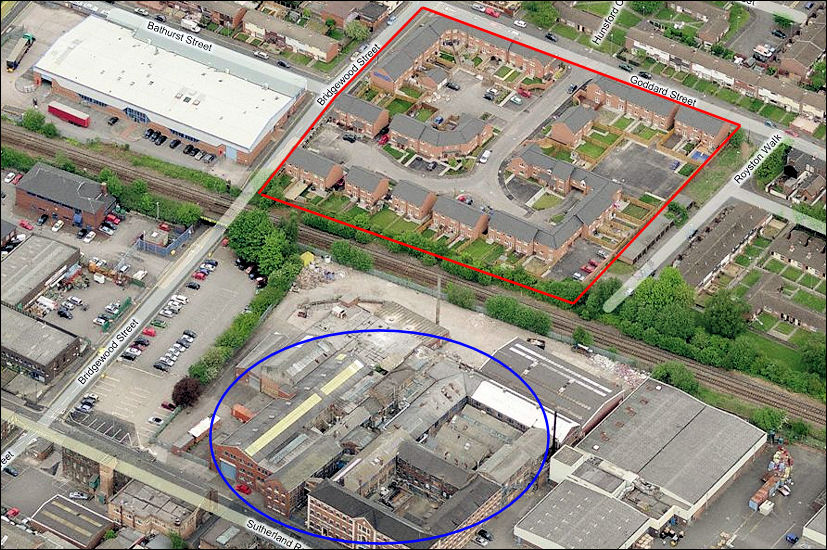
housing now built on the location of the pottery works
Bing Maps
|
Anchor Pottery Sampson Bridgwood & Son, who were extensive manufacturers, first carried on business in the Market Street Works, and next for many years at a manufactory in Stafford Street, originally occupied by G. Forrester, which was purchased by the Commissioners of Longton and pulled down for the erection of the market buildings. They then removed to the Anchor Pottery (in about 1853), where they produced both china and earthenware. In china, all the usual tea, breakfast, and dessert services were made - partly for the home, but principally for the United States and Canadian markets. In earthenware, white granite was made for the United States, Australian and Canadian trades. The speciality was what was technically called 'Parisian granite' (stamped 'Limoges'), which has a fine hard durable body and excellent glaze. The nineteenth-century mark used on china was an impressed stamp of the name S. BRIDGWOOD & SON. The Parisian granite bears the impressed stamp, an oval with the word LIMOGES and, in the centre, P.G. (for Parisian granite). It also bears the printed mark of an elaborate shield of arms with mantling, sceptres, etc., and the words PORCELAIN OPAQUE, Jewitt's: Ceramic Art of Great Britain 1800-1900 |
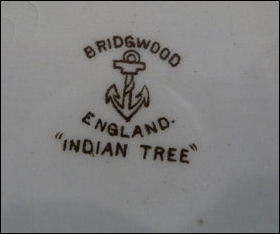 |
 |
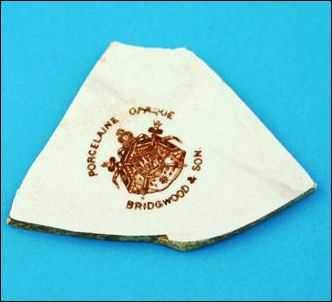 |
typical Bridgwood marks


|
related pages external links also see..
|